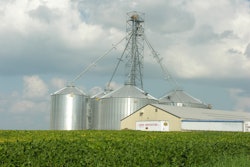Animal rights activist groups have long attacked every aspect of the animal production industry and continue to gain support by distributing misinformation about agriculture’s toll on the environment. Thanks to their use of controversial gimmicks and celebrity endorsements, they’ve experienced a fair amount of success with campaigns like “Meatless Mondays” and “Rather go naked than wear fur.”
These messages easily reach the eyes and ears of America’s youth by simply turning on the TV or driving passed a highway billboard. Counter messages are seemingly nowhere in sight and one part of these damaging claims appeared to be backed by science at one point.
In 2006, the United Nations Food and Agriculture Organization (UN-FAO) published a report, “Livestock’s Long Shadow,” stating that livestock production is responsible for 18% of all greenhouse gases (GHG) globally, surpassing the amount attributed to all forms of transportation combined. The findings made international news and served as fuel for further attacks.
After the comparison of livestock versus transport was publically challenged by air quality specialists, the UN-FAO retracted it. Today the UN-FAO is working on developing a new model to measure animal agriculture’s true impact on the environment, and the Institute for Feed Education & Research (IFEEDER) has approved funding for two U.S. representatives to be involved in the process on behalf of the feed industry.
Additionally, IFEEDER will fund two education initiatives aimed at grade school children to teach them about the benefits of animal agriculture and help reverse the mainstream attitude toward modern food production.
Flawed findings
When “Livestock’s Long Shadow” concluded that the livestock industry produced more GHG emissions than the entire transportation sector, Dr. Frank Mitloehner, associate professor and air quality extension specialist at University of California-Davis, questioned the methodology behind the results.
“When I disputed the FAO’s findings, the discussion we had was based on methodological issues,” says Mitloehner. “For livestock, they used a certain method called a true lifecycle assessment, but they didn’t use the same holistic method for transportation, so direct comparison between the two sectors was inaccurate.”
Mitloehner says according to the EPA, the U.S. livestock sector — including all species — produces approximately 3.4% of total GHGs. Meanwhile transportation represents 26% and electricity use and production represents 31%.
“Meat production is still a factor, but it’s not the major factor some activists make it to be,” says Mitloehner. “Using the UN-FAO’s initial findings as a reason to stop eating meat is leading us down the wrong path for solutions. It suggests that changing your eating habits will have a profound impact on your carbon footprint, and that’s not the case. It will have an impact, but not a similar impact compared to transportation or heating and cooling choices.”
The UN-FAO is now reaching out across the world to feed organizations like the American Feed Industry Association (AFIA) and academic institutions to get the methodology right for a new study it is conducting on population growth and world hunger and a life cycle assessment for all regions in the world.
A new model
Recognizing that livestock production will play a major role in ensuring food security for the growing planet, the UN-FAO is producing a report to help the livestock industry find environmentally conscious ways to increase future output. Global meat production is projected to more than double from 229 million tons in 1999 to 465 million tons in 2050.
Accurately revising the lifecycle assessment for livestock is imperative to the results of this study and will require data such as how much corn, soy and other ingredients are produced and consumed annually in the United States.
IFEEDER’s board of Trustees approved a $15,000 grant for AFIA to represent the U.S. feed industry and provide the data the UN-FAO needs. The grant will fund the expenses for Mitloehner and Dr. Gary Hartnell of Monsanto to participate in stakeholder meetings, help formulate the new model and review it before final publication, planned for 2014.
The results will provide sector-specific recommendations based on their assessment of GHG emissions along every aspect of the livestock supply chain. The information will ultimately be used to optimize processes associated with the production of feed ingredients to reduce GHG emissions.
Besides working with government and international agencies on research questions like carbon footprint assessment, Mitloehner notes that the public is interested yet udderly uninformed about agriculture, an issue that needs to be addressed.
“Who tells the public where beef, poultry, or swine come from and how they are raised?” asks Mitloehner. “Mainly anti-agriculture groups who put their spin on their material. It’s up to the agriculture industry to provide truthful information (rather than just PR material) especially to children, because the schools have a severe scarcety of informative material on ag and food.”
Taking the message to school
People are likely to believe that livestock production is harmful to the environment if it’s the first message they’re exposed to as children. So to provide a counter message to the mainstream, IFEEDER recently entered a partnership with the Animal Agriculture Alliance to provide 400 elementary through high school teachers with information and materials about the value of modern farming.
Patrick Whidden of Tennessee Farmers Cooperative andchair of IFEEDER’s Education Committee explains“We’re funding the Adopt-a-Teacher program that will give AFIA members the chance to send kits to their local schools. The concept behind the program is to give school teachers interested in teaching their students about agriculture, the truthful information and materials they need.”
IFEEDER will distribute 400 kits throughout its donors and AFIA’s members now through August 2013. Animal Ag Alliance’s executive vice president, Kay Johnson- Smith, is looking forward to sending out a record number of kits in the coming years with the help of the new partnership.
“该计划最初于1997年推出,was re-launched about two years ago,” says Johnson-Smith. “We had 40 teachers adopted in 2010, and we’re at 30 for 2011 so far. Our numbers are still small, so we’re excited about the IFEEDER grant because we feel this agreement to reach out to 400 teachers will give the program the traction it needs to become an effective program on behalf of agriculture.”
Each kit contains a teacher resource guide, which provides a list of numerous free materials available online or that can be requested from the information provider. Other materials in the kit are tailored either to elementary, middle or high school children.
“The elementary school kit has a different level of material and includes reading books, coloring books and worksheets teachers can photocopy for students to take home,” says Johnson-Smith.”The middle school and high school packets have more discussion-oriented pieces, videos, charts and maps that could be utilized in the classroom.”
The kits include information from all farm animal species — beef, pork, dairy and the various poultry industries — as well as materials with general farm facts from the American Farm Bureau Federation, such as how many people farmers can feed today and information about technology. Finally, each kit includes a link to a survey where teachers respond to questions about how the kit was used, how valuable the information was and where it could be improved.
AFIA will notify its members when the opportunity is available to begin “adopting” teachers. Interested members will receive an “adoption form” to list the teacher who will receive a personalized letter indicating they have been “adopted” along with their kit.
Colorful lessons
In addition to IFEEDER’s Adopt-a-Teacher outreach to K-12 students, its leadership recognizes the importance of early childhood education, and partnered with farming website Connecting Farm to Fork to produce a feed industry resource for children of any age.
Connecting Farm to Fork had already been distributingThe ABCs of Farming Coloring Book,and developed a special edition featuring IFEEDER’s logo on the front and back covers and feed industry-related lessons for the letters “F,” “Q,” and “S.”
“In addition to the picture the child colors, each letter will have a one sentence story about the feed industry,” explains Whidden. “The letter ‘F’ is for the U.S.feed industry, ‘Q’ is forquality standards and ‘S’ is forsafety, which is what the U.S. feed industry does to ensure products are healthy and good for farm animals.”
IFEEDER is funding the publication of 30,000 books and will make them available to interested AFIA members and IFEEDER donors to distribute throughout their communities.
Over the next 40 years, the world’s leaders will need to devise a plan to sustainably produce food for an exploding population. The children targeted in these initiatives will one day be responsible for the United States’ future food and agriculture policies, highlighting the importance of presenting a positive message about agriculture to a young audience.
Over the summer, 149 AFIA members donated their dues rebate to IFEEDER for a total of more than $90,000. If you or your company would like to help support IFEEDER's work, please visit www.ifeeder.org.





















